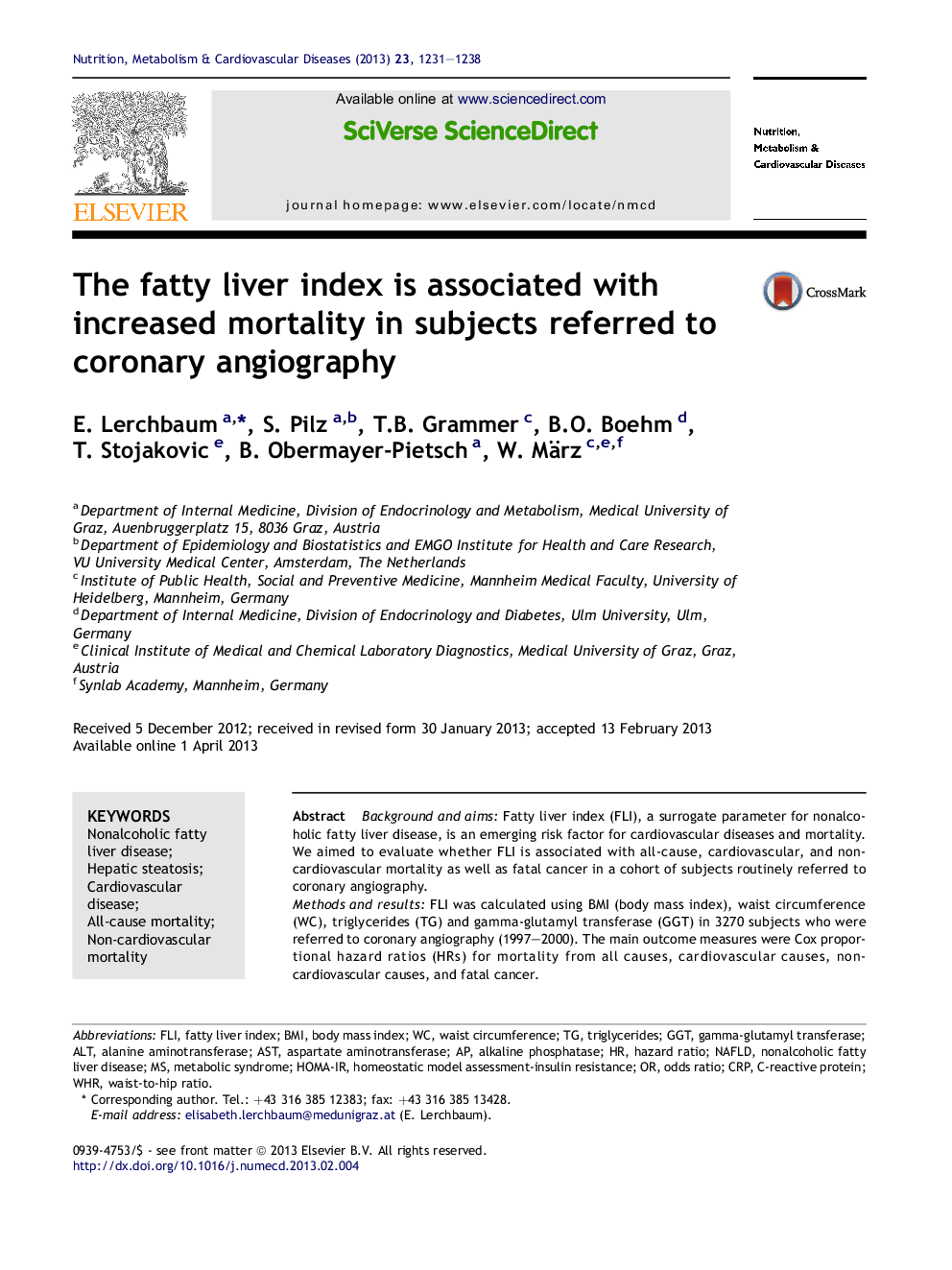| کد مقاله | کد نشریه | سال انتشار | مقاله انگلیسی | نسخه تمام متن |
|---|---|---|---|---|
| 3002190 | 1180707 | 2013 | 8 صفحه PDF | دانلود رایگان |

Background and aimsFatty liver index (FLI), a surrogate parameter for nonalcoholic fatty liver disease, is an emerging risk factor for cardiovascular diseases and mortality. We aimed to evaluate whether FLI is associated with all-cause, cardiovascular, and non-cardiovascular mortality as well as fatal cancer in a cohort of subjects routinely referred to coronary angiography.Methods and resultsFLI was calculated using BMI (body mass index), waist circumference (WC), triglycerides (TG) and gamma-glutamyl transferase (GGT) in 3270 subjects who were referred to coronary angiography (1997–2000). The main outcome measures were Cox proportional hazard ratios (HRs) for mortality from all causes, cardiovascular causes, non-cardiovascular causes, and fatal cancer.After a median follow-up time of 7.7 years, 740 subjects (22.6%) had died. There were 437 deaths due to cardiovascular disease and 303 deaths due to non-cardiovascular disease. Age-, sex-, and BMI-adjusted HRs (with 95% confidence intervals) for all-cause, cardiovascular, and non-cardiovascular mortality in the highest compared to the lowest FLI quartile were 2.56 (1.90–3.43; p < 0.001), 2.17 (1.47–3.22; p < 0.001), and 3.49 (2.16–5.66; p < 0.001), respectively. In age-, sex-, and BMI-adjusted analyzes, we found no significant association of FLI with fatal cancer. Multivariate adjusted HRs for all-cause, cardiovascular, non-cardiovascular mortality, and fatal cancer in the highest compared to the lowest FLI quartile were 2.17 (1.58–2.99; p < 0.001), 1.64 (1.07–2.51; p = 0.023), 3.72 (2.22–6.24; p < 0.001), and 2.33 (1.01–5.41; p = 0.048) respectively.ConclusionIn subjects referred to coronary angiography, high FLI levels are independently associated with increased all-cause, cardiovascular, and non-cardiovascular mortality as well as fatal cancer.
Journal: Nutrition, Metabolism and Cardiovascular Diseases - Volume 23, Issue 12, December 2013, Pages 1231–1238